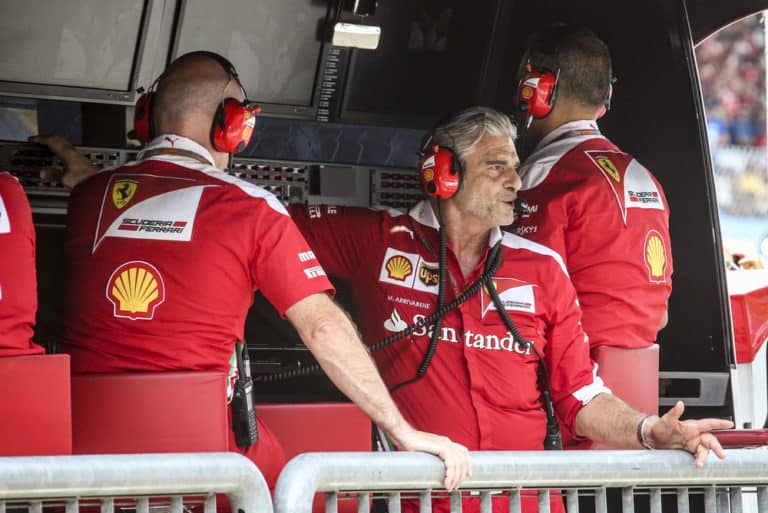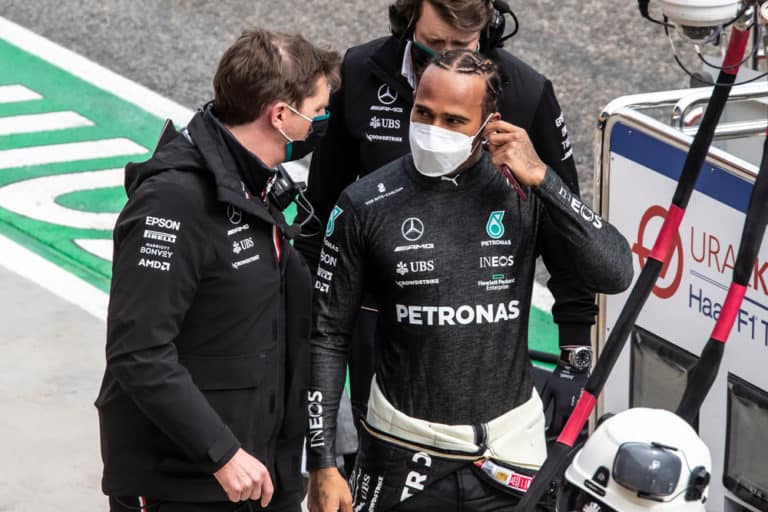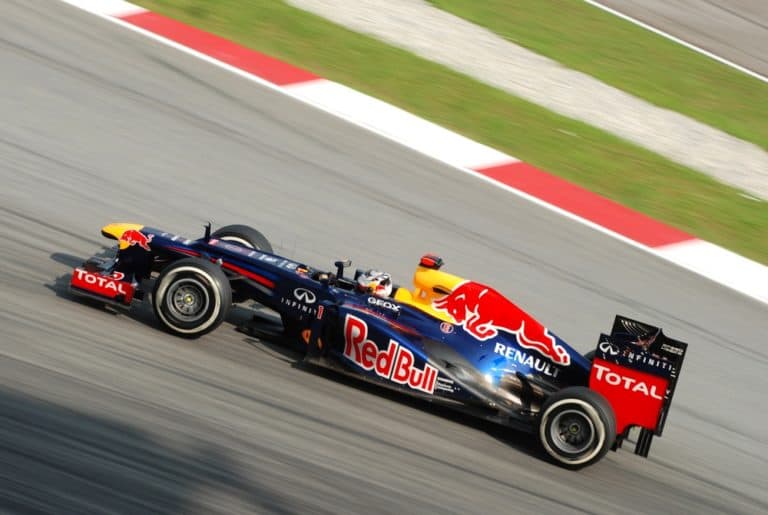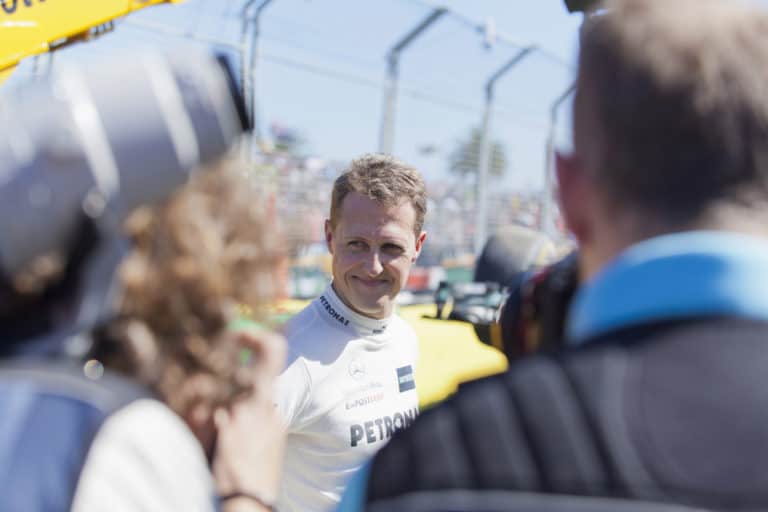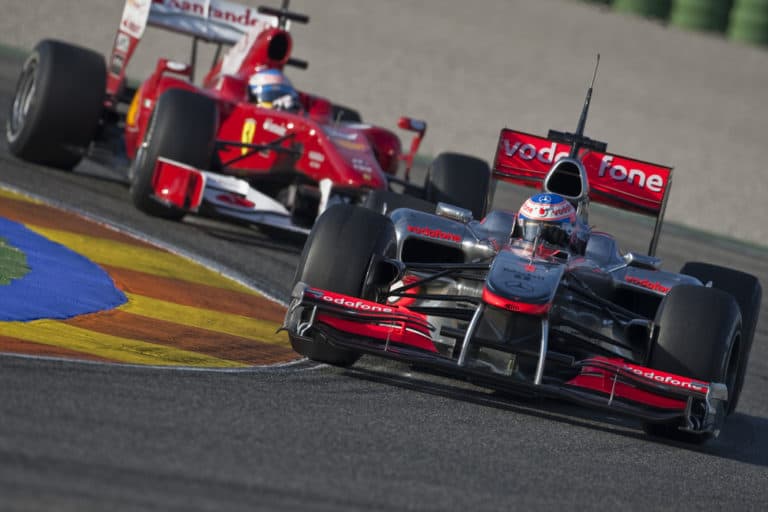With F1 and MotoGP gaining much popularity these last few decades, it is not surprising that these two sports have become worldwide sensations. These sports, both dangerous and challenging for different reasons, might make you wonder which is harder, F1 or MotoGP.
Due to the extremely high speeds in both F1 and MotoGP racing, g-forces exert extraordinarily high pressure on the riders, especially in F1. Although both sports require extraordinary physical fitness, steering an F1 car is considerably more difficult than riding a bike.
When comparing factors like g-forces, steering technicalities, and physical endurance in F1 and MotoGP, it is essential to look at their impact on the difficulty of both these motorsports. Let’s explore which of these motorsports are harder.
Which Sport Is Harder – F1 Or MotoGP?
In Formula 1 and MotoGP, participants frequently reach very high speeds. In Formula 1, when driving straight, drivers hit speeds of up to 220mph, while when cornering, speeds are often between 100 and 190mph, depending on the type of corner. MotoGP riders also reach speeds of up to 220mph but are significantly slower when cornering and only hit between 50 and 85mph.
As F1 and MotoGP are extreme motorsports, it is no surprise that these two vehicles are hard to ride. An average car driver or motorcycle rider won’t be able to steer one of these vehicles as participants of these sports are highly skilled through years of training and are some of the most athletic sportsmen in all American sports.
When riding either straight or when cornering, MotoGP riders have it easier. MotoGP riders use their bodies and body positioning to balance out the g-forces applied to them while riding. Formula 1 drivers don’t have that type of luxury. As F1 drivers are seated in a cockpit with little to no moving space, they are hit straight on with g-forces while driving.
How Do G-Forces Impact F1 And MotoGP?
The first aspect that influences the difficulty of these two spots is g-force. As g-force typically means gravity, the higher g-force an F1 driver and MotoGP rider is exposed to, the higher the amount of gravitational pull is placed on them. These two sports are affected by g-forces when cornering, braking, and accelerating. Both F1 and MotoGP train participants to withstand g-forces through intensive training.
F1 drivers frequently reach speeds of up to 220mph, creating g-forces of up to 6 g’s. F1 drivers need to withstand these g’s and might feel like they weigh up to 6 times their original weight. When trying to withstand this force for too long, high amounts of g-force can cause a lack of blood flow in the human body and sometimes lead to riders blacking out.
Compared to Formula 1, MotoGP isn’t as severely affected by g-forces. MotoGP riders frequently reach up to 1.2 g’s in force, while anything above 1.4 g’s is very high. This means that unlike the six times the body weight that F1 drivers feel, MotoGP riders experience below 2. These g’s can still cause MotoGP riders to struggle when riding as g-forces from different angles push them in other directions.
Is F1 Or MotoGP Harder To Steer?
While the steering of MotoGP and F1 might seem easy from the outside, the difficulty of steering these vehicles should not be taken lightly. F1 drivers and MotoGP riders are professionals and undergo immense training to ensure they are confident in controlling their vehicles.
Speed is one of the primary reasons an F1 car is challenging to steer. As F1 cars frequently reach speeds of 200mph, the vehicle has a massive amount of downforce. Downforce makes the car hard to control and causes drivers only to use instinct while cornering. The driver controls these speeds, meaning the slightest mistake can cause a crash.
G-forces also influence the steering of an F1 car. As drivers frequently hit high volumes of g-force, they must steer an F1 car while 5 to 6 times their body weight pushes against them. While this weight pushes against them, drivers are also expected to drive at high speeds as F1 cars are not meant to be driven slowly, and slow driving can influence their handling ability.
While Formula 1 drivers use steering wheels, most of the steering in MotoGP is done through the riders’ body positioning. Riders must ensure they are always in the correct position, as different aspects of riding require different body positions. While riding straight, riders need to lean forward to ensure good aerodynamics and lean in different directions while cornering to ensure good turning.
Riders go through intensive training before attempting to ride one of these bikes. MotoGP riders must drive up to 200mph and decelerate to below 100mph in a few seconds when cornering. This quick change in speed increases the g-forces and how hard it is to steer the bike.
Is F1 Or MotoGP More Physically And Mentally Demanding?
It is no surprise that Formula 1 and MotoGP are both very hard and demanding sports. Drivers must be mentally and physically fit, as these two aspects can be the make-or-break of their season. A driver who’s not in peak mental and physical condition places their life and the lives of all the other drivers at risk.
Physically, Formula 1 is very demanding. Drivers undergo tough training sessions to withstand the heat of the cockpit and the massive amount of pressure or force implied by the g-forces when driving at 200+ mph. The main training points for drivers are strength and cardiovascular training, flexibility training, and conditioning their core muscles while also training their neck muscles.
Formula 1 is also a very mentally demanding sport. The mental health of an F1 driver is of utmost importance, as when they get behind the steering wheel, their lives and their opponents’ lives are in their hands. A crash is much more likely if Formula 1 riders aren’t mentally fit. Drivers also need to be mentally fit as they need to be able to make split-second decisions.
The physical training of MotoGP riders consists of pre-season fitness training, racing period fitness training, summer break fitness training, and off-season fitness training. During training, riders focus on strength and flexibility training. Strength workouts are vital as it ensures sufficient leverage and stability. Flexibility training is also crucial, enabling riders to move faster on the bike when necessary.
Mental conditioning is also a very significant factor in MotoGP. Riders must be focused at all times while staying alert to their surroundings. They must also think quickly and act responsibly, as it is not only their lives at stake but also the lives of their fellow riders. Being mentally fit and in a suitable mind space will ensure safety for all on the track.
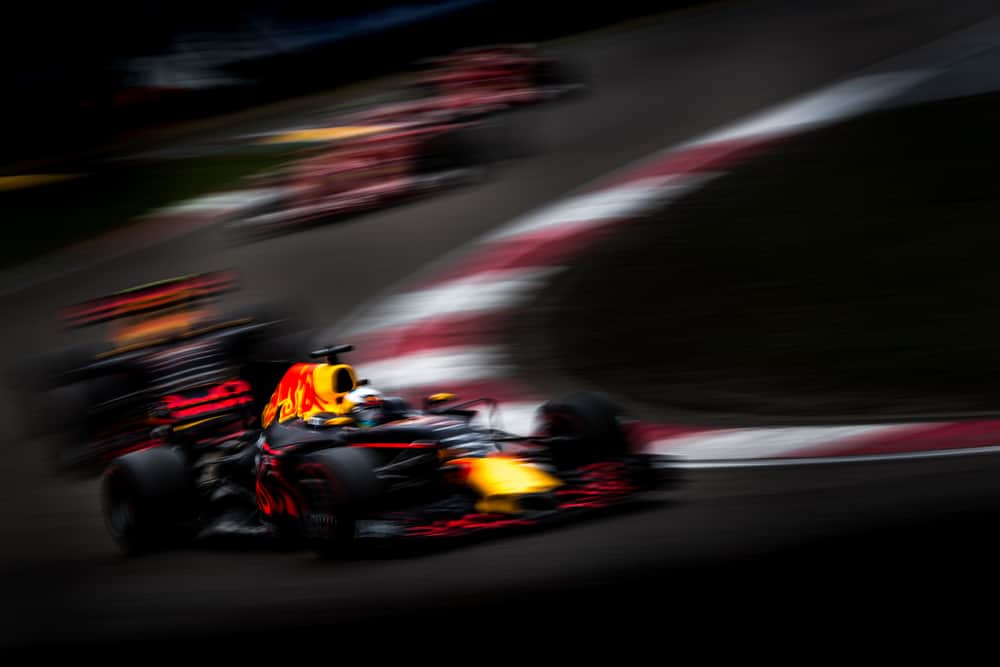
Conclusion
Although Formula 1 and MotoGP are both challenging, Formula 1 is the harder of the two sports. Formula 1 is affected by some of the same aspects as MotoGP but to a higher degree. High g-force levels, car steering technicalities, and the physical endurance of drivers influence the difficulty of both Formula 1 and MotoGP.
References
- https://www.quora.com/How-hard-is-it-for-F1-drivers-to-steer-the-driving-wheel
- https://www.technogym.com/gb/wellness/the-10-essential-qualities-of-a-formula-one-champion/
- https://www.ferrarichat.com/forum/threads/f1-v-s-motogp-alonso-v-s-rossi-part-2.94133/
- https://www.motogp.com/en/news/2021/08/06/brivio-reveals-motogp-and-f1-s-similarities-and-differences/383503
- https://www.motorsport.com/motogp/news/the-difference-in-braking-between-f1-and-motogp/3156157/amp/

